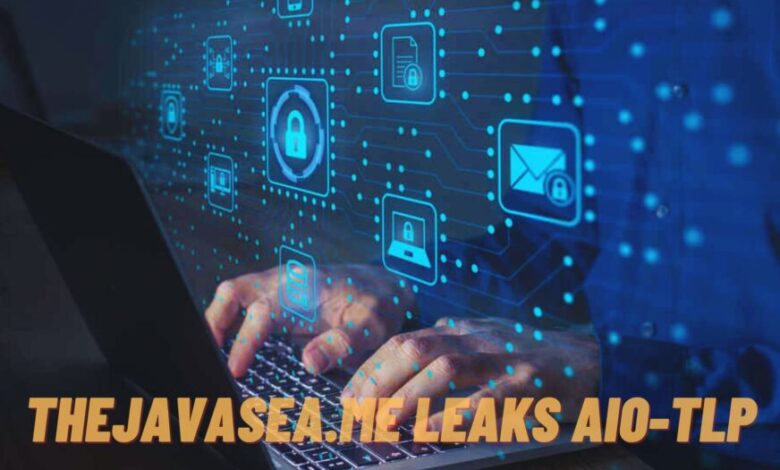Everything About TheJavaSea.me Leaks AIO-TLP You Should Know

In the age of digital information, privacy and security are hot topics that continue to dominate discussions among tech enthusiasts and professionals alike. Recently, one incident in particular has caught the attention of the online community: TheJavaSea.me Leaks AIO-TLP. This leak has sent waves through the industry, raising questions about data protection, privacy, and how online systems handle sensitive information. In this article, we’ll dive deep into the details of TheJavaSea.me Leaks AIO-TLP, explaining what it is, why it matters, and what you can do to protect yourself.
What is TheJavaSea.me?
Before we delve into the specifics of the leak, it’s essential to understand what TheJavaSea.me is. TheJavaSea.me is a platform known for providing various services, tools, and resources catered to developers and tech enthusiasts. The site has built a reputation for offering comprehensive technical guides, tutorials, and software resources in the realms of programming, cybersecurity, and IT. The community that surrounds TheJavaSea.me is mostly composed of coders, developers, and cybersecurity experts who use the platform for learning, sharing information, and collaborating on technical projects.
However, while the site has provided invaluable resources over the years, recent developments have placed it in the crosshairs of a data breach controversy. The TheJavaSea.me Leaks AIO-TLP incident has unveiled some concerning details, highlighting potential vulnerabilities in the site’s security systems.
Understanding the AIO-TLP Leak
The heart of the issue lies in what’s now being referred to as the AIO-TLP leak. AIO stands for “All In One,” and TLP represents “Traffic Light Protocol.” Together, TheJavaSea.me Leaks AIO-TLP refers to a comprehensive set of leaked data involving sensitive user information that was released without consent.
What is the Traffic Light Protocol (TLP)?
To fully grasp the severity of this leak, it’s important to understand what the Traffic Light Protocol (TLP) is. TLP is a classification system used by cybersecurity professionals to control the flow of sensitive information. It is typically broken down into four categories, each represented by a different color:
- TLP– Information is highly confidential and should not be shared outside of the immediate circle of people involved.
- TLP– Information is limited to a certain group of people who need to know about the specifics.
- TLP– Information can be shared within a community but not released to the public.
- TLP– Information is safe for public disclosure.
The AIO-TLP leak implies that sensitive data, potentially classified under any of these TLP levels, was exposed. The combination of an “All In One” data leak with TLP classification makes this situation particularly troubling, as it involves various levels of confidentiality.
What Kind of Data Was Leaked?
The exact nature of the data compromised in the TheJavaSea.me Leaks AIO-TLP remains partially speculative, as full details have not been officially confirmed by site administrators. However, early reports and insights from cybersecurity researchers indicate that the leak contains user credentials, email addresses, IP addresses, internal communications, API keys, and possibly even financial transaction records.
While the scope of the leak has not been entirely quantified, users of TheJavaSea.me are urged to take immediate steps to secure their accounts and ensure their data remains protected. This includes resetting passwords, enabling two-factor authentication (2FA), and monitoring for any suspicious activity on their accounts.
How Did The Leak Happen?
The exact methods behind the AIO-TLP leak are still under investigation, but several common vulnerabilities could have contributed to the breach. These include poor encryption standards, outdated server security protocols, or even human error within TheJavaSea.me’s infrastructure.
Potential Causes
- Weak Password Protection: If the site’s user accounts were not protected with strong hashing algorithms, attackers could have exploited this weakness to gain access to user credentials.
- Outdated Software: Many sites fall victim to breaches due to outdated server software or unpatched vulnerabilities in third-party tools. It’s possible that TheJavaSea.me suffered a similar issue.
- Phishing Attacks: Social engineering techniques, such as phishing, could have been used to trick administrators or employees of TheJavaSea.me into giving up sensitive information.
- Misconfigured Security: Poorly configured firewalls or permission settings can also lead to data breaches, as attackers may exploit gaps in the system to access restricted areas.
Whatever the cause, the leak highlights the importance of maintaining rigorous security standards in today’s digital world.
The Impact of the Leak
Impact on Users
For regular users of TheJavaSea.me, the leak poses a serious risk. If user data such as email addresses, passwords, and personal information was indeed part of the breach, this could lead to identity theft, financial fraud, or account hijacking. Users who have reused passwords across multiple platforms are especially at risk, as attackers could use the leaked credentials to access other accounts.
Impact on Developers and the Community
The leak has also significantly affected the TheJavaSea.me community, particularly developers and cybersecurity professionals who have relied on the platform’s resources. Trust in the platform has been shaken, and many users are questioning the site’s ability to handle sensitive data moving forward. As a result, some developers have begun migrating their projects and data to more secure platforms.
How Can You Protect Yourself?
Given the potential risk associated with the TheJavaSea.me Leaks AIO-TLP, users need to take proactive steps to protect their data and accounts. Here are a few things you can do:
- Change Your Passwords: If you’re a user of TheJavaSea.me, change your passwords immediately. Ensure that your new password is strong, unique, and not reused across other platforms. Use a password manager to generate and store your credentials securely.
- Enable Two-Factor Authentication (2FA): If the platform allows it, enable two-factor authentication. This adds an extra layer of security to your account, making it harder for attackers to gain access.
- Monitor Your Accounts: Keep a close eye on your financial accounts, emails, and other sensitive platforms for any unusual activity. If you notice anything suspicious, report it to the relevant service immediately.
- Be Wary of Phishing Attempts: In the aftermath of leaks like this, phishing attempts often spike. Be cautious of any emails or messages that ask you to click on links or provide personal information, even if they seem legitimate.
- Stay Informed: Keep an eye on official updates from TheJavaSea.me regarding the leak. The site’s administrators are likely to release further details about what happened and how they plan to prevent future breaches.
What is TheJavaSea.me Doing to Fix the Issue?
In response to the leak, TheJavaSea.me has issued several statements acknowledging the breach and promising to take immediate action. The site’s administrators have reportedly begun a comprehensive investigation into the leak’s origin and are working with cybersecurity experts to close any vulnerabilities.
Some of the measures the site is expected to implement include:
- Upgrading encryption protocols: By enhancing the encryption used to store sensitive data, TheJavaSea.me can ensure that even if attackers manage to access their servers, the stolen information will be difficult to decrypt.
- Reinforcing authentication methods: Implementing stronger authentication protocols, such as mandatory 2FA for all users, can help mitigate the risk of account takeovers.
- Conducting regular security audits: To prevent future breaches, TheJavaSea.me is likely to conduct regular security audits and vulnerability assessments, ensuring their systems remain up-to-date and secure.
Conclusion
The TheJavaSea.me Leaks AIO-TLP is a sobering reminder of the importance of cybersecurity in the digital age. While the full extent of the leak is still being uncovered, its impact has already been felt by users and developers alike. If you are a user of TheJavaSea.me, it’s crucial to take immediate steps to protect your data, including changing passwords, enabling 2FA, and staying vigilant for any suspicious activity. Meanwhile, the site’s administrators will need to work diligently to rebuild trust and secure their systems to prevent further breaches.
FAQs
- What is the AIO-TLP leak?
The AIO-TLP leak refers to a data breach from TheJavaSea.me where sensitive information, including potentially classified data under the Traffic Light Protocol (TLP), was exposed. - What is the Traffic Light Protocol (TLP)?
The Traffic Light Protocol (TLP) is a system used by cybersecurity professionals to classify the sensitivity of shared information using color codes like Red, Amber, Green, and White. - What data was leaked from TheJavaSea.me?
While the full scope is not confirmed, early reports suggest user credentials, email addresses, IP addresses, and possibly financial information were exposed. - How can I protect my data after the leak?
Users should change their passwords immediately, enable two-factor authentication, and monitor their accounts for any unusual activity. - What is TheJavaSea.me doing to fix the issue?
TheJavaSea.me has begun investigating the breach and is implementing stronger encryption and security protocols to prevent future incidents.



